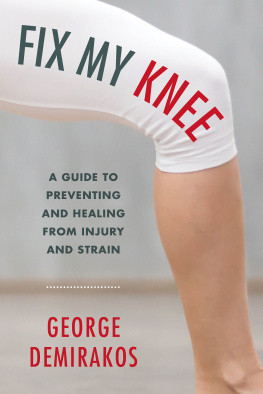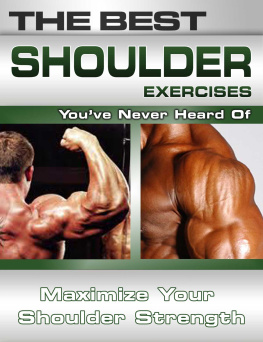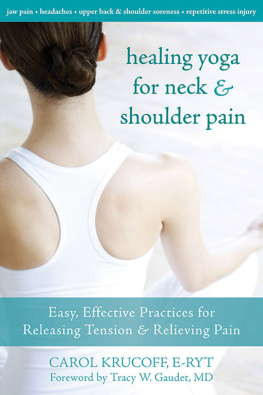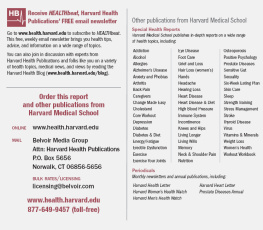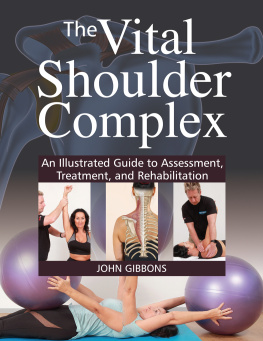Acknowledgments
I am deeply grateful and appreciative of all the people who have helped me bring this initial dream into actual fruition. I could not have done this alone without so many people knowingly and unknowingly guiding me and cheering me on to make this book. To all of you out there, thank you so much.
To Sarah Jane Freymann, my amazing agent, who believed in me when no one else would and who took a chance. I would not be here if not due to you.
To Susanne Margolis, my magician, who waves her magic wand and turns some dry, medical reading into a joyous fun story that people would want to read.
To my publishing company, Rowman and Littlefield, and to my editor, Suzanne Stasiak-Silva. With her confident and calming personality, she would instantly take my stress away and make my progress into this writing world so much easier.
I also want to thank Kathryn Knigge, Laura Reiter, Flannery Scott, and everyone at Rowman and Littlefield for the amazing work that they did with my pictures in the book. Thanks, guys!
To my parents, who encouraged me to follow my dreams and never stop trying with a smile on my face, as well as my sisters, who have inspired me to give as much as I can to others as they have given back to me.
To all the people out there who gave me strength to go ahead and write this book, inspiring me to become the best therapist I can be and keep cheering for me all the way. I would personally like to thank the following amazing therapists: Bahram Jam, David Campbell, Joel Cyr, Julie Gardner, Karen Litzy, Ann McMillan, and Frederic Watine. If you have ever been treated by them, consider yourselves very lucky.
To the countless other therapists who I have met and who have enriched my practice with their golden nuggets of knowledge and skillall the physiotherapists, athletic therapists, osteopaths, chiropractors, and doctors. Thank you so much.
Special thanks also goes to the following people without whose encouragement and goodwill help, this book would still be a dream of mine: Robert Soroka, Lynn Betts, Roger Casgrain, and Alain April.
I would also like to take this opportunity to thank my spiritual motivators, Mr. Arnold Schwarzenegger, Dr. Mehmet Oz, Miss Jillian Michaels, and Mr. Gordon Ramsay. I have never met them, but through their hard work and undeniable determination, they helped me believe in myself and overcome obstacles that I didnt think I could. To them, I say thanks.
I would also like to thank Augustus Mantelis from Augustus Photography and his crew for the beautiful pictures taken. A special thank you goes out to Mindy Shear Poupko from Mindy Shear Cosmetics for making us look young and amazing.
A special shout out goes to the models, Kendra Toothill, Talia Erdan, and Martin Durand, who came in to help at the last minute, and did a fantastic job. I am very lucky to call them my friends.
I would also like to thank all my patients who I have had the pleasure of meeting and treating their shoulder problems over the years. I hope that this book helps you find the relief that you are looking for.
I would like to thank my son and daughter who put up with the fact that daddy had to work and could not play with them everyday. You are the best and I love you so much.
And lastly, none of these ideas could have happened if it were not for my shining light in my life, my wife, Frankie. She has been through thick and thin, all the ups and downs, and her beautiful smile always made me do things that I thought I could never do. She is the reason why you are reading this book. You are my life, my everything. Thank you for being my best friend.
Bibliography
CHAPTER ONE
David, G., M. E. Magarey, M. A. Jones, Z. Dvir, K. S. Trker, and M. Sharpe. EMG and Strength Correlates of Selected Shoulder Muscles during Rotations of the Glenohumeral Joint. Clinical Biomechanics 15, no. 2 (2000): 95102.
Jam, Bahram. The Shoulder Complex. Thornhil, ON: Advance Physical Therapy Education Institute, 2000.
Ludewig, P., and T. Cook. Alterations in Shoulder Kinematics and Associated Muscle Activity in People with Symptoms of Shoulder Impingement. Physical Therapy 80, no. 3 (2000): 27791.
CHAPTER TWO
Bigliani, L. U., D. Morrison, and E. W. April. The Morphology of the Acromion and Its Relationship to Rotator Cuff Tears. Orthopaedic Transactions 10, no. 228 (1986).
Brox, J., E. Gjengedal, G. Uppheim, A. S. Bhmer, J. I. Brevik, A. E. Ljunggren, and P. H. Staff. Arthroscopic Surgery Versus Supervised Exercises in Patients with Rotator Cuff Disease (Stage II Impingement Syndrome): A Prospective, Randomized Controlled Study in 125 Patients with a 2 Year Follow-Up. Journal of Shoulder and Elbow Surgery 8, no. 2 (1999): 10211.
Cagey, O., H. Bonfait, C. Cillot, I. Hureau, and F. Mazas. Anatomic Basis of Ligamentous Control of Elevation of the Shoulder (Reference Position of the Shoulder Joint). Surgical Radiology Anatomy 9, no. 1 (1987): 1926.
Haahr, J. P., S. stergaard, J. Dalsgaard, K. Norup, P. Frost, S. Lausen, E. A. Holm, and J. H. Andersen. Exercises Versus Arthroscopic Decompression in Patients with Subacromial Impingement: A Randomized, Controlled Study in 90 Cases with a One Year Follow Up. Annals of the Rheumatic Diseases 64, no. 5 (2005): 76064.
McMonagle, J. Scott, and Emily N. Vinson. MRI of the Shoulder: Rotator Cuff. Applied Radiology 41, no. 4 (2012): 2027.
Smith, Chris, Rupen Dattani, Victoria Deans, and Steve Drew. The Sourcil Sign: A Useful Finding on Plain X-ray. Shoulder & Elbow 2, no. 1 (2010): 912.
CHAPTER THREE
Freidman, Philip, and Gail Eisen, The Pilates Method of Physical and Mental Conditioning. New York: Viking Studio, 2005.
Goldman, Nanna, Michael Chen, Takumi Fujita, Qiwu Xu, Weiguo Peng, Wei Liu, Tina K Jensen, Yong Pei, Fushun Wang, Xiaoning Han, Jiang-Fan Chen, Jurgen Schnermann, Takahiro Takano, Lane Bekar, Kim Tieu, and Maiken Nedergaard. Adenosine A1 Receptors Mediate Local Anti-Nociceptive Effects of Acupuncture. Nature Neuroscience 13, no. 7 (2010): 88388. doi: 10.1038/nn.2562.
Myszko, Amy. Vitamins and Minerals that Aid in Collagen Formation. Article updated February 5, 2014. Accessed May 28, 2014. http://www.livestrong.com/article/357927supplements-that-re-buildcollagen/.
Molsberger, A. F., T. Schneider, H. Gotthardt, and A. Drabik. German Randomized Acupuncture Trial for Chronic Shoulder Pain (GRASP)A Pragmatic, Controlled, Patient-Blinded, Multi-Centre Trial in an Outpatient Care Environment. Pain 151, no. 1 (2010): 14651.
Pilates, Joseph H. Return to Life through Contrology. 1945. Reprint, Miami, FL: Pilates Method Alliance, 2005.
Segen, J. C. The Dictionary of Modern Medicine (Dictionary Series). New York: CRC Press, 1992.
Speed, C., and B. L. Hazelman. Shoulder Pain. Online version of BMJs Clinical Evidence (2006). Accessed February 2006.
CHAPTER FOUR
Bandy, W., and J. Irion. The Effect of Time on Static Stretch on the Flexibility of the Hamstring Muscles. Physical Therapy 74, no. 9 (1994): 84552.
Garfinkel, S., and E. Carafelli. Relative Changes in Maximal Force, EMG, and Muscle Cross-Sectional Area after Isometric Training. Medicine and Science in Sports and Exercise 24, no. 11 (1992): 122027.
Grimby, G., C. Heijne, O. Hook, and H. Wedel. Muscle Strength and Endurance after Training with Repeated Maximal Isometric Contraction. Scandanavian Journal of Rehabilitation Medicine 5, no. 3 (1973): 11823.
CHAPTER FIVE
Caillet, R., and L. Gross. The Rejuvenation Strategy. New York: Doubleday and Company, 1987.
Carney, Dana R., Amy J. C. Cuddy, and Andy J. Yap. Power Posing: Brief Nonverbal Displays Affect Neuroendocrine Levels and Risk Tolerance.


